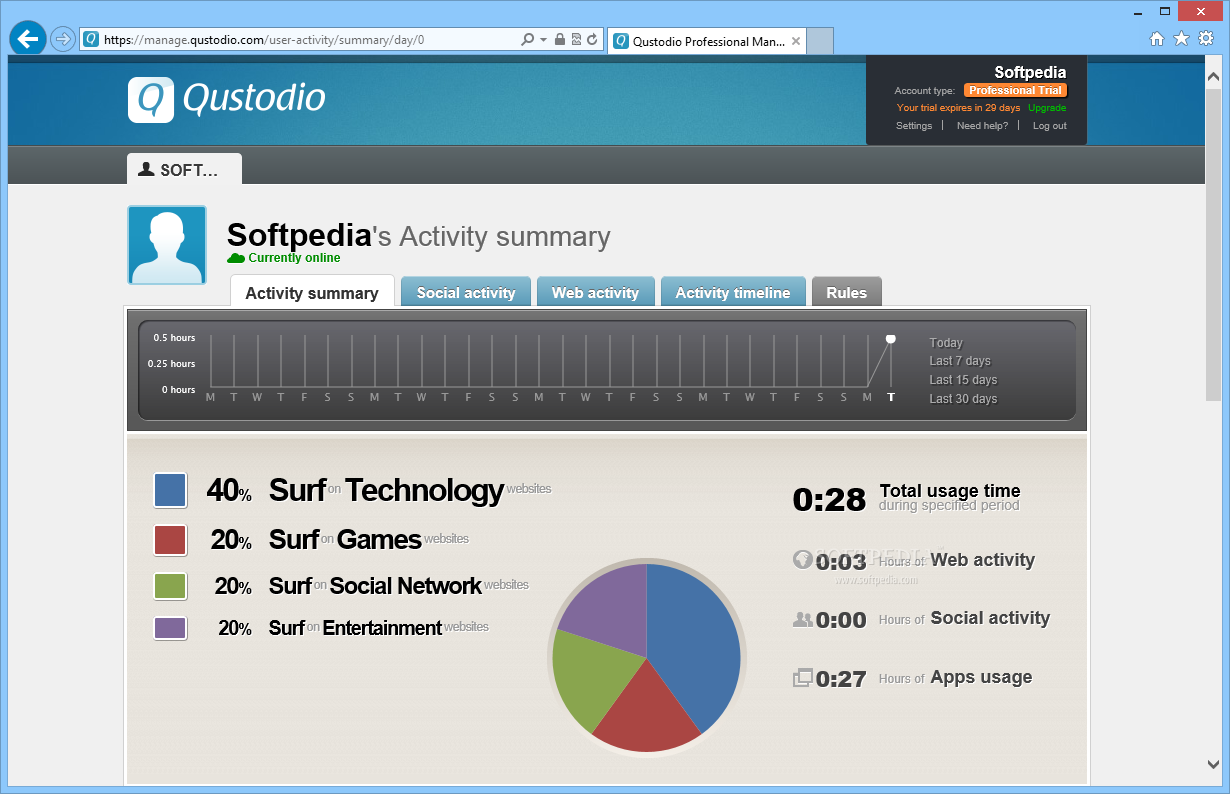
To install Qustodio on mobile, download the app from the relevant app store.Īfter installation, a setup wizard takes you through several steps to get started.Ī neat option we encountered during the desktop install process was to check a box labeled Don’t let anyone see Qustodio has been installed on this computer. Note that to install the Qustodio app, all browser tabs must be closed. If not, and you click No, you’ll be instructed to go to the Qustodio download page using a browser on the device you want to protect. Select Protect This Device, and the client (assuming you’re on desktop) will download. If it is, click Yes and you’ll be directed to a page with the app download. You’ll be asked if it’s the device you’re currently using. Select from a smartphone, desktop, or tablet. The next step is to choose a device to add.

The nice thing about this free trial is you don’t need to submit any payment information.įirst, you’re prompted to add a child’s profile by entering their name, year of birth, and gender. New subscribers are automatically provided with a three-day free trial of the Premium plan. To start, sign up for an account on (right from the homepage) and you’ll land in the Qustodio web portal.


Getting Qustodio set up was a pretty simple process to go through compared to other parental control options, and we even came across a few surprising innovations along the way that we haven’t seen before. Is this software a little too pricey for what you get, or will its stellar web dashboard and filtering capabilities be enough to justify the cost? Read our Qustodio parental control review to find out! Update: You can trial Qustodio free for 3 days. Qustodio offers one of the most comprehensive lists of features we’ve seen on a parental control software suite yet, but it comes with an equally imposing price point that may scare off some users.

Qustodio may have a slightly odd name, but its parental control software takes its job very seriously, and the effort shows.


 0 kommentar(er)
0 kommentar(er)
